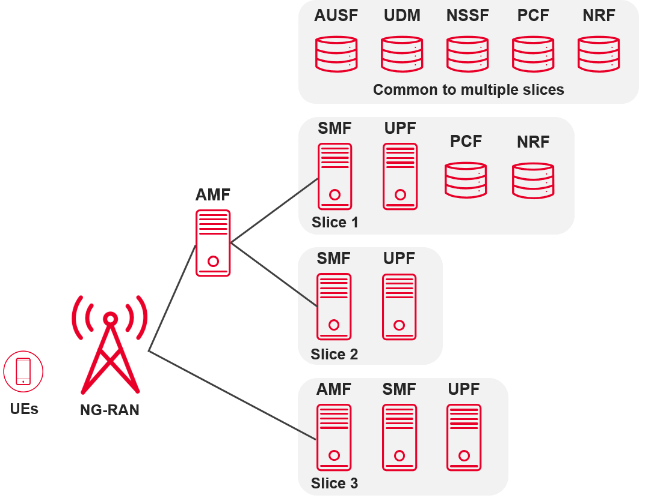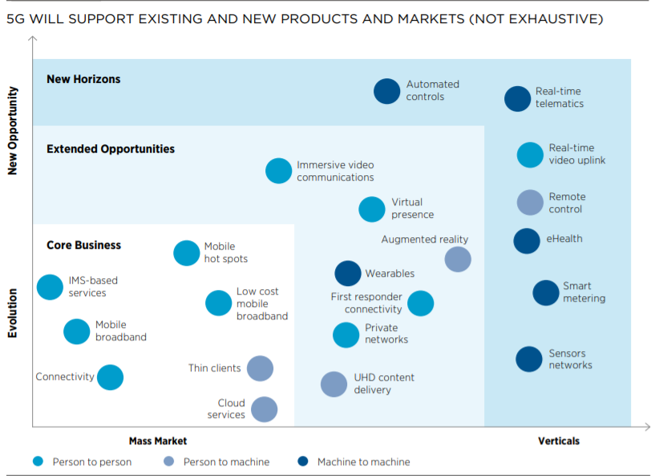
5G Testing: What Is 5G Network Slicing?
5G network slicing represents a significant business opportunity for mobile network operators (MNOs) around the globe. Estimated at $300 billion by 2025¹, it is considered the most significant commercial innovation opportunity in the 5G era.
Network slicing is a concept enabled by the 5G core standards, cloud technology, and virtualization. It signifies a paradigm shift in the communications services industry with a move from defined services pushed onto customers to pull offerings.
Network slicing capabilities in 5G come from the 3rd Generation Partnership Project (3GPP) standards and are only available in 5G standalone (SA) mode. 5G non-standalone (NSA) mode still uses the 4G core network that does not allow user equipment (UE) to access multiple slices simultaneously or radio network slicing. Private networks are the only way to implement network slicing in 4G.
A network slice in 5G is an independent, end-to-end logical network that runs on a shared physical infrastructure and provides better service quality. Transparency is a crucial aspect of a network slice. Users are not aware of the network slice they are using.

Figure 1. 5G network slicing diagram
Network slices are customized to meet specific service requirements for multiple factors, including latency, reliability, mobility, throughput, and others. Slicing needs to be orchestrated, operated, and assured on agreed-upon service level agreements (SLAs). All parts need to work together to achieve a common goal based on the customer’s needs. Slice features span data speed, quality, latency, reliability, security, and services.
Cloud-native virtualization makes the 5G core network more flexible and economical through orchestration and dynamic and flexible scaling. This helps network slicing become an economical solution while enabling the assignment of resources to each slice. Isolation, however, is a critical aspect of network slicing and a significant challenge for implementation and validation. Preventing data communication in one slice from impacting services in other slices is critical. You need to consider functions, configurations, resources, usage lifecycle, and security aspects.
Network slicing challenges go hand in hand with the use cases and the markets they address. New opportunities in the industrial market, for example, have different key performance indicators (KPIs) compared to the mass market for enhanced mobile broadband (eMBB) services. Some of the challenges relate to performance for resources or timing. Network slices are also sensitive to delay. Interpacket delay tolerance for voice is 20 ms, but only 4 ms for industrial control, and 0.5 ms for motion control.

Figure 2. 5G existing and new product and markets
Slice creation and management is also challenging. You need to rapidly deploy virtual network functions (VNFs) and allocate network resources to accommodate as many diversified services as you can. Also, slices must scale dynamically according to the varying service load.
Slice management refers to the traffic characteristics and performance you need to configure and provide like data rate, packet drop, and latency. It also includes the ability to assign slice services based on geographic user distribution. Slice management can be per session, user, or slice instance.
Service assurance brings another set of challenges. Slicing and dicing the network means meeting the SLAs defined for each slice, customer, or vertical. You should check that individual slices adhere to KPIs. It requires scaling and managing each slice individually. You also need to ensure end-to-end quality of service (QoS) for the slices. The involvement of different vendors also means addressing interoperability issues.
Network slicing represents a sizeable business opportunity that network operators can’t afford to miss. While the concept creates significant new challenges for network design and test engineers, they are not unsurmountable. To learn more about the concept, including network slice identifiers, creation, selection, and call flow, view our recent webinar on the topic 5G Network Slicing: Ensuring Successful Implementation and Validation.
You can find other resources on 5G core network testing at www.keysight.com/find/5G.
¹ GSMA